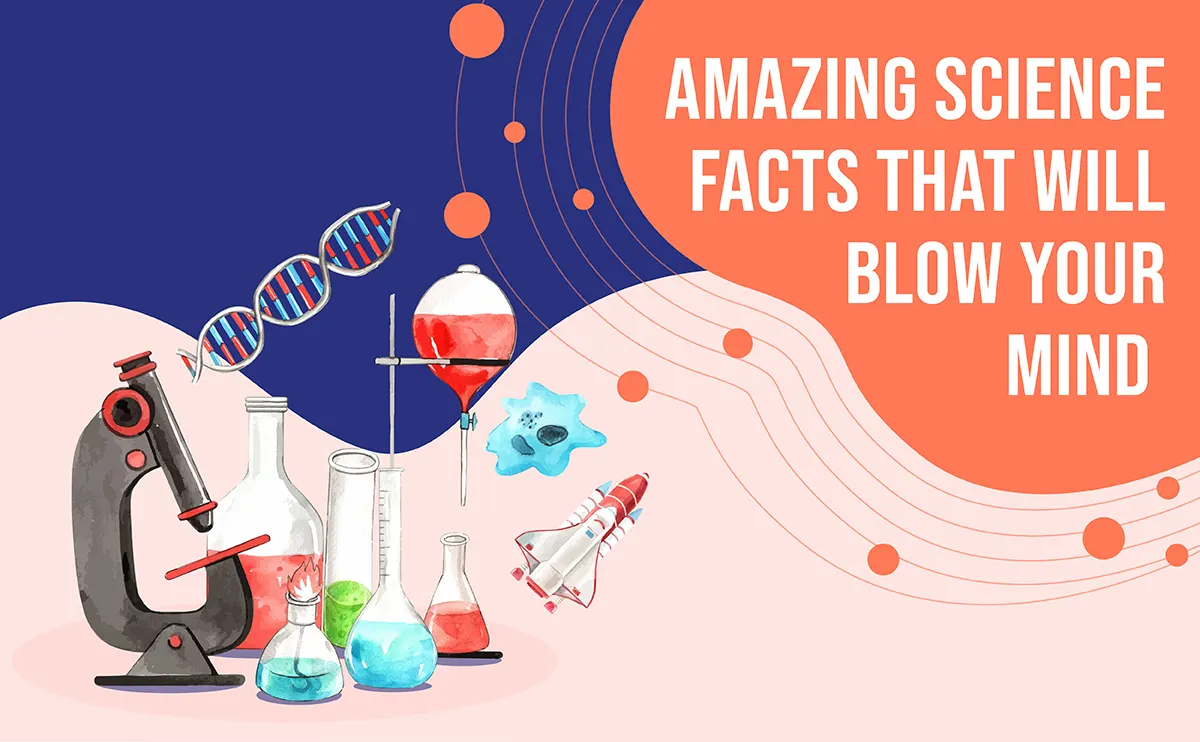
20 Amazing Facts Related to Science
Science is an ever-evolving field that continually uncovers mysteries about our universe, our planet, and ourselves. Here are 20 astonishing facts from various branches of science that will leave you in awe:
1. Quantum Entanglement:
Two particles can become entangled in such a way that the state of one particle instantly influences the state of the other, regardless of the distance separating them. This phenomenon, described by Einstein as “spooky action at a distance,” challenges our classical understanding of reality.
2. Black Holes:
Black holes are regions in space where gravity is so strong that nothing, not even light, can escape. They are formed from the remnants of massive stars and can continue to grow by absorbing nearby matter.
3. DNA:
The human DNA, if uncoiled and stretched out, would reach a length of about 2 meters in each cell. Considering the trillions of cells in the human body, it’s a marvel of compact information storage.
4. Photosynthesis:
Plants perform a process called photosynthesis, where they convert sunlight into energy. This process is so efficient that it provides the oxygen we breathe and forms the foundation of the food chain.
5. Tardigrades:
Also known as water bears, tardigrades are microscopic animals capable of withstanding extreme conditions. They can survive in boiling water, intense radiation, and even the vacuum of space.
6. Neutron Stars:
Neutron stars are the remnants of supernova explosions and are incredibly dense. A teaspoon of neutron star material would weigh about 6 billion tons, roughly the weight of Mount Everest.
7. Dark Matter:
Although it makes up about 27% of the universe, dark matter remains one of the greatest mysteries in astrophysics. It doesn’t emit or interact with electromagnetic radiation, making it invisible and detectable only through its gravitational effects.
8. The Double Slit Experiment:
In quantum mechanics, the double-slit experiment demonstrates that particles like electrons can exhibit wave-like behavior. The act of observation itself affects the outcome, highlighting the bizarre nature of the quantum world.
9. The Big Bang:
The universe is believed to have originated from a singular point around 13.8 billion years ago in an event known as the Big Bang. This explosive expansion set the stage for the formation of galaxies, stars, and ultimately, life.
10. The Human Brain:
The human brain consists of about 86 billion neurons, interconnected in complex networks. It’s the most sophisticated organ known, responsible for consciousness, emotions, memories, and every aspect of human cognition.
11. Fusion in Stars:
Stars, including our Sun, produce energy through nuclear fusion, where hydrogen atoms combine to form helium, releasing vast amounts of energy in the process. This fundamental process powers the luminosity and life cycle of stars.
12. The Higgs Boson:
The discovery of the Higgs boson in 2012 confirmed the existence of the Higgs field, which gives particles their mass. This breakthrough validated the Standard Model of particle physics and provided insights into the fundamental forces of nature.
13. Plate Tectonics:
The Earth’s crust is divided into tectonic plates that constantly move and interact. This movement results in earthquakes, volcanic activity, and the formation of mountain ranges, reshaping the Earth’s surface over millions of years.
14. Superconductivity:
Certain materials, when cooled to extremely low temperatures, can conduct electricity without any resistance. This phenomenon, known as superconductivity, has the potential to revolutionize energy transmission and medical imaging technologies.
15. Quantum Computing:
Quantum computers utilize quantum bits or qubits, which can exist in multiple states simultaneously due to superposition. This allows quantum computers to solve complex problems much faster than classical computers for certain applications.
16. The Doppler Effect:
The Doppler effect describes the change in frequency or wavelength of a wave in relation to an observer. It’s why the pitch of an ambulance siren seems to change as it approaches and then passes by, demonstrating the relativity of motion.
17. Electromagnetic Spectrum:
The electromagnetic spectrum encompasses all forms of electromagnetic radiation, from radio waves to gamma rays. Each part of the spectrum has unique properties and applications, ranging from communication to medical imaging.
18. The Uncertainty Principle:
Proposed by Werner Heisenberg, the uncertainty principle states that it’s impossible to simultaneously know both the precise position and momentum of a particle. This inherent uncertainty is a fundamental aspect of quantum mechanics.
19. The Cambrian Explosion:
Around 541 million years ago, the Cambrian explosion led to a rapid diversification of multicellular life forms. This pivotal event in evolutionary history laid the foundation for the incredible biodiversity observed on Earth today.
20. The Theory of Relativity:
Albert Einstein’s theory of relativity fundamentally changed our understanding of space, time, and gravity. It describes how massive objects warp spacetime, influencing the motion of objects and the propagation of light.
From the vastness of the cosmos to the intricacies of the quantum realm, these facts underscore the beauty, complexity, and wonder of the scientific universe. As science continues to advance, no doubt even more astonishing discoveries await us, further enriching our understanding of the world around us.

I loved you even more than you’ll say here. The picture is nice and your writing is stylish, but you read it quickly. I think you should give it another chance soon. I’ll likely do that again and again if you keep this walk safe.
Nice blog here Also your site loads up fast What host are you using Can I get your affiliate link to your host I wish my web site loaded up as quickly as yours lol
I appreciate your website, however I think you might check the spelling of a few of your postings. Even though I find it quite difficult to tell the truth because so many of them have spelling errors, I will most certainly return.
I am truly thankful to the owner of this web site who has shared this fantastic piece of writing at at this place.